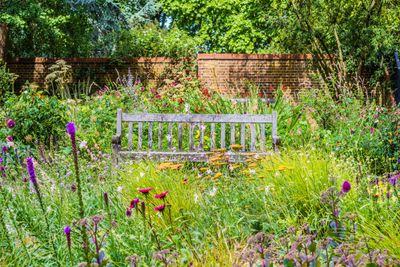How to Design a Native Garden
Always become familiar with the types of native garden plants that may already be growing on your property. This not only gives you an idea of the types of plants that thrive in your particular location but also makes it easier as you begin gardening with native plants and adding them to your design. Native plants flourish in their natural environment and complement the surrounding landscape of your home. Creating a native garden with seasonal interest, from spring through winter, requires careful planning and placement of long-lasting bloomers and a variety of foliage plants. For additional interest, include a focal point of some kind. If you are fortunate enough to live in an area surrounded by woods, then a woodland garden will look right at home. When creating natural gardens, try not to overlook the plant’s leaves when choosing native garden plants. While flowers make the garden intense with color, the foliage can provide impressive contrast and texture too. This additional interest draws attention to the area, inviting others into the garden for a closer look, especially during non-blooming periods. However, if you select plants carefully, there will always be something in bloom.
Native Garden Plants
There are many plants to choose from when designing native gardens. Plant spring-flowering natives throughout the garden, but take care to keep them toward the middle or further towards the back. This will allow you to hide them with cover-up plants once their blooms have faded. Popular spring bloomers include:
Iris Phlox Anemone Violet Virginia bluebells
Summer-flowering plants will take over once the spring blooms have faded away. Use these as camouflage to create nonstop flowering.
Shasta daisy Flax Goldenstar Goat’s beard
Once autumn arrives, the garden will maintain its appeal with the addition of fall-flowering natives and bulbs such as:
Toad lily Autumn crocus Cyclamen Winter daffodil
Once flowering bulbs and other plants begin to fade, the intense shades of foliage color create a stunning display. For instance, the bronze-colored stalks of blazing star can be quite striking. This color can be further enhanced among a background of evergreens. Native evergreen shrubs and ground covers will liven up the landscape with various shades of color too. Besides amazing color, plants having various forms and textures will continue to maintain appeal well into winter. Don’t overlook the interesting characteristics of bark, especially those that have peeling or patterned features. While ornamental grasses tend to reach their peak during fall, they also provide interesting seed heads, berries and foliage. Winter wonder also comes from the colorful seed heads of native garden plants like purple coneflower and sedum. Creating natural gardens is easy with well thought-out planning. By keeping plants within the natural scheme of your own landscape and incorporating a variety of seasonal bloomers, you can enjoy nonstop flowering in a naturalistic setting every day of the year.
